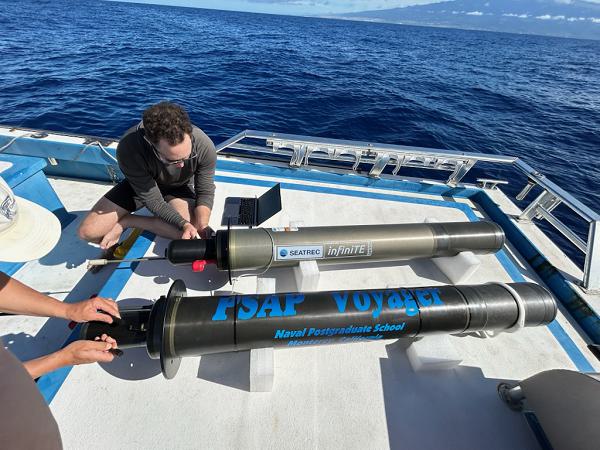
Monterey, California. (February 15, 2025): What seeing is to the Air Force is what hearing is for the Navy. In this underwater world, even the slightest noise can reveal ones position to the enemy. This is why the Navy is developing underwater sentinels to listen for enemy submarines around the world. In this photo courtesy of Seatrec Corporation, researchers prepare the Persistent Smart Acoustic Profiler (PSAP) Voyager for initial testing in Monterey Bay. The PSAP is a self-powered autonomous underwater drone used to collect acoustic data for long periods of time.
What makes it special is its ability to “harvest” energy from the ocean with no need of external power sources.
For decades, man has harnessed the kinetic energy of the sea’s natural motions like waves, tides, and currents. Various devices have been developed to capture this energy such as energy converters or tidal turbines. A new technology is emerging, however, that uses temperature differences, not motion, to reliably power underwater vehicles.
This new method is called Ocean Thermal Energy Conversion (OTEC) which is the process of extracting electricity by using the existing temperature difference between warmth near the surface and the much colder water below. The Navy has established a research and development program to explore OTEC technology as a way to eliminate reliance on fossil fuels or batteries to power underwater vehicles. The Naval Facilities Engineering Command is responsible for conducting research and field testing of potential uses of OTEC to enable extended missions and increased operational capabilities in the ocean. The operations include oceanographic research, surveillance, mine countermeasures, and seabed mapping.
Despite these advances, many challenges remain to fully implement OTEC. The Navy is working on optimizing heat exchanger technology to include materials that can absorb and release energy as they change state, like when an ice cube melts. It is hoped that these “passive” energy sources will create clean and sustainable power suitable for all future underwater vehicles.


